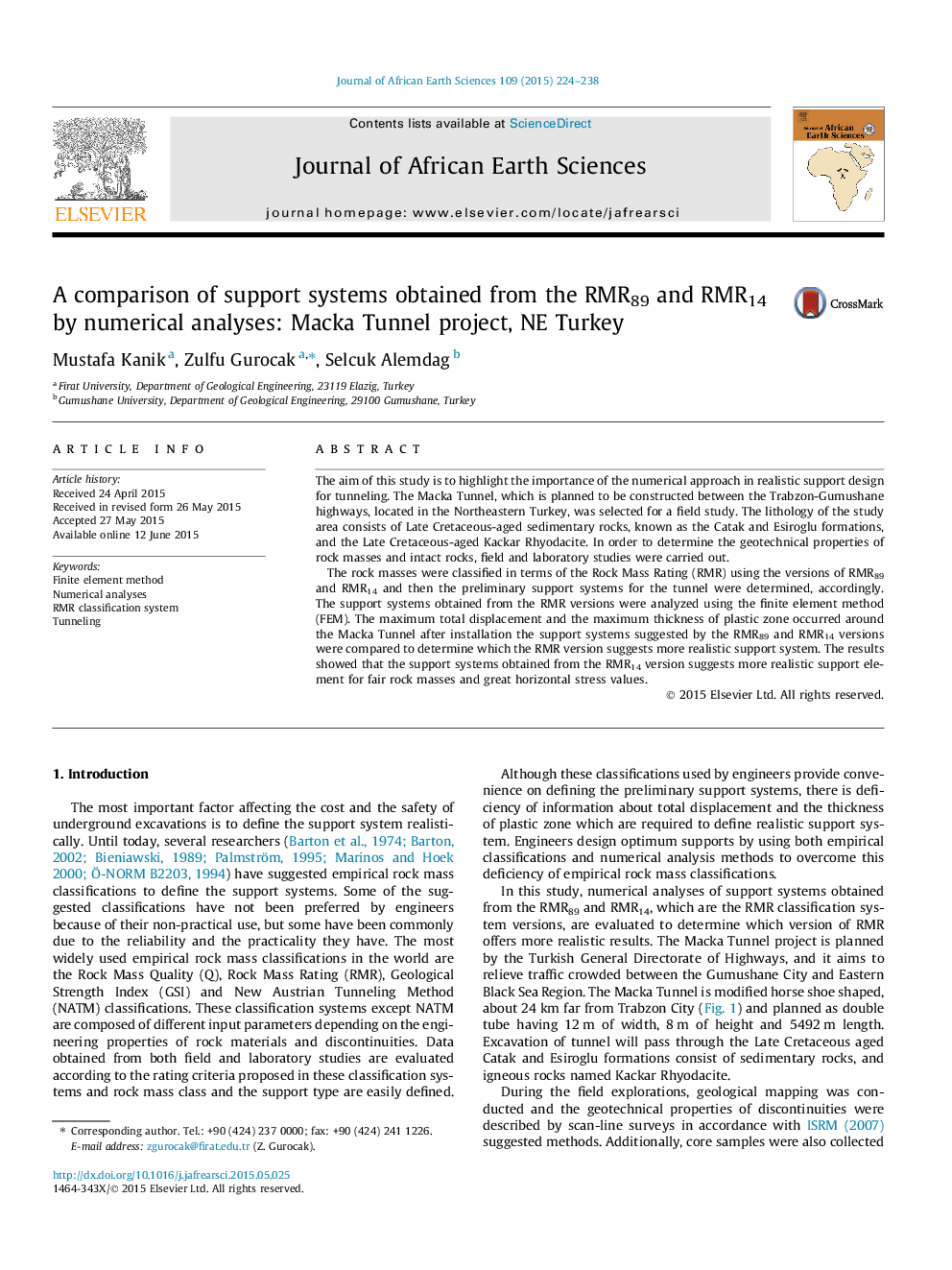| Article ID | Journal | Published Year | Pages | File Type |
|---|---|---|---|---|
| 4728648 | Journal of African Earth Sciences | 2015 | 15 Pages |
•The rock masses were classified using the versions of RMR89 and RMR14.•The support systems were evaluated by numerical analyses using FEM.•The results obtained from numerical analyses were compared each other.•The RMR14 version suggested more realistic support system.
The aim of this study is to highlight the importance of the numerical approach in realistic support design for tunneling. The Macka Tunnel, which is planned to be constructed between the Trabzon-Gumushane highways, located in the Northeastern Turkey, was selected for a field study. The lithology of the study area consists of Late Cretaceous-aged sedimentary rocks, known as the Catak and Esiroglu formations, and the Late Cretaceous-aged Kackar Rhyodacite. In order to determine the geotechnical properties of rock masses and intact rocks, field and laboratory studies were carried out.The rock masses were classified in terms of the Rock Mass Rating (RMR) using the versions of RMR89 and RMR14 and then the preliminary support systems for the tunnel were determined, accordingly. The support systems obtained from the RMR versions were analyzed using the finite element method (FEM). The maximum total displacement and the maximum thickness of plastic zone occurred around the Macka Tunnel after installation the support systems suggested by the RMR89 and RMR14 versions were compared to determine which the RMR version suggests more realistic support system. The results showed that the support systems obtained from the RMR14 version suggests more realistic support element for fair rock masses and great horizontal stress values.
